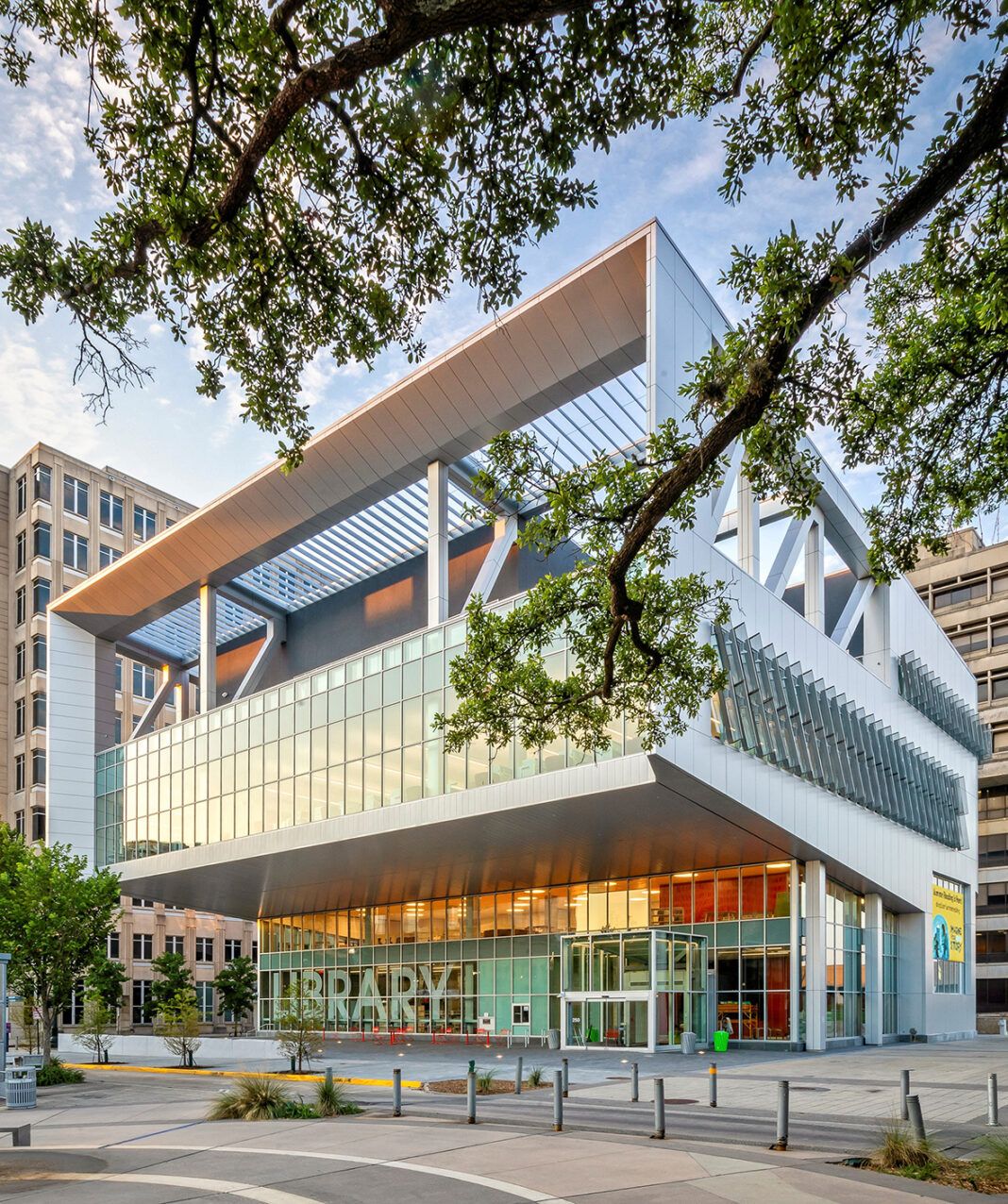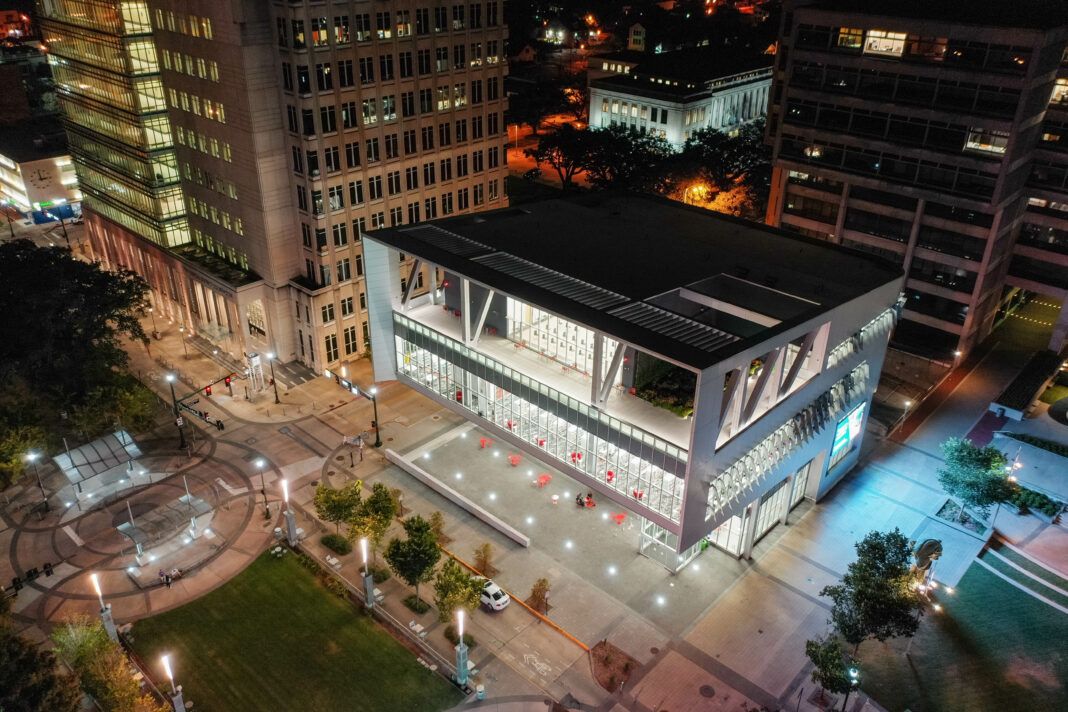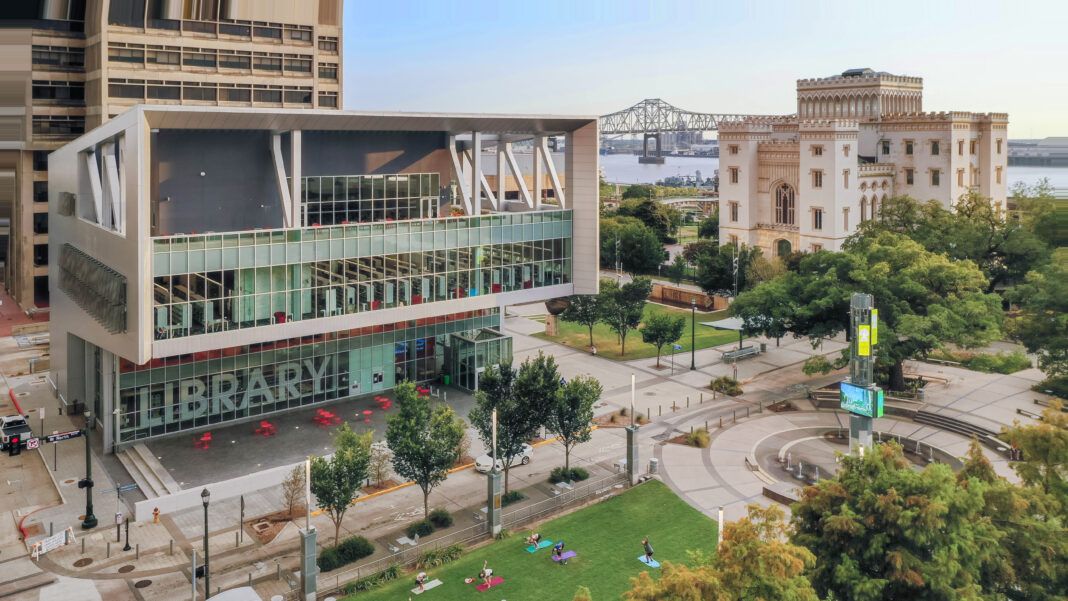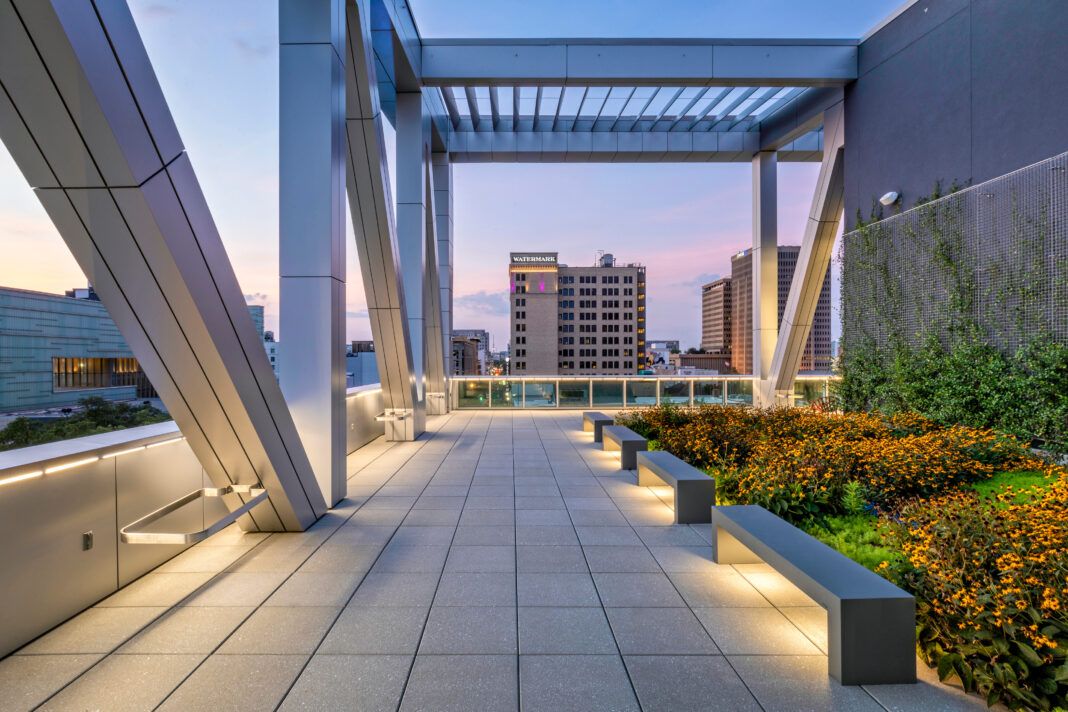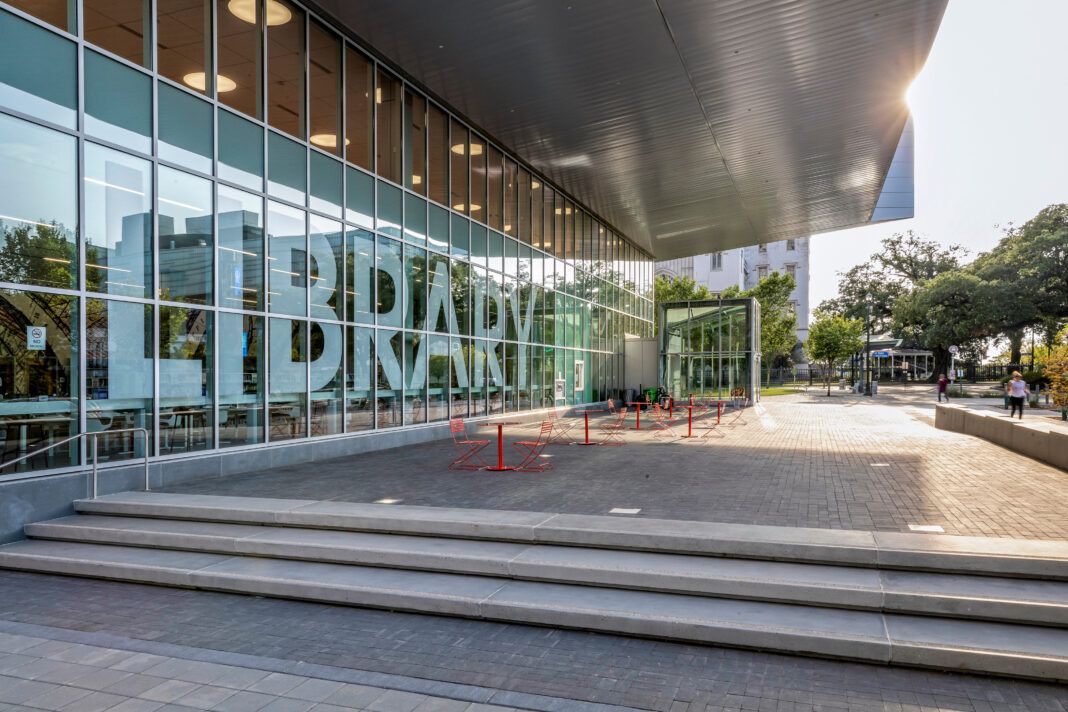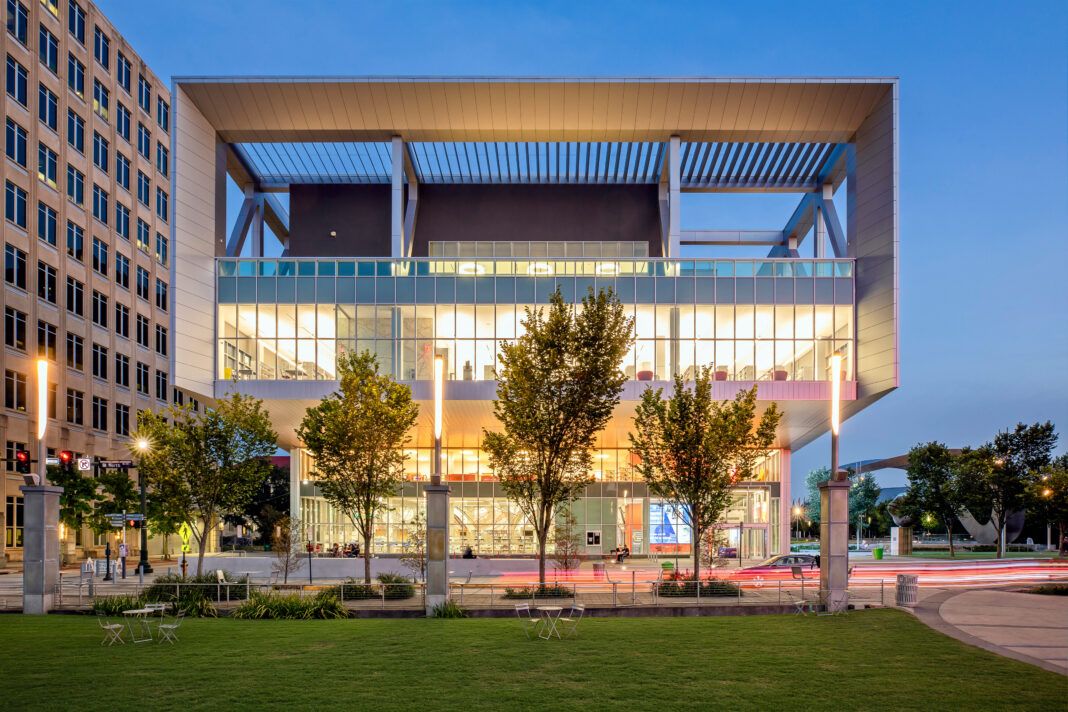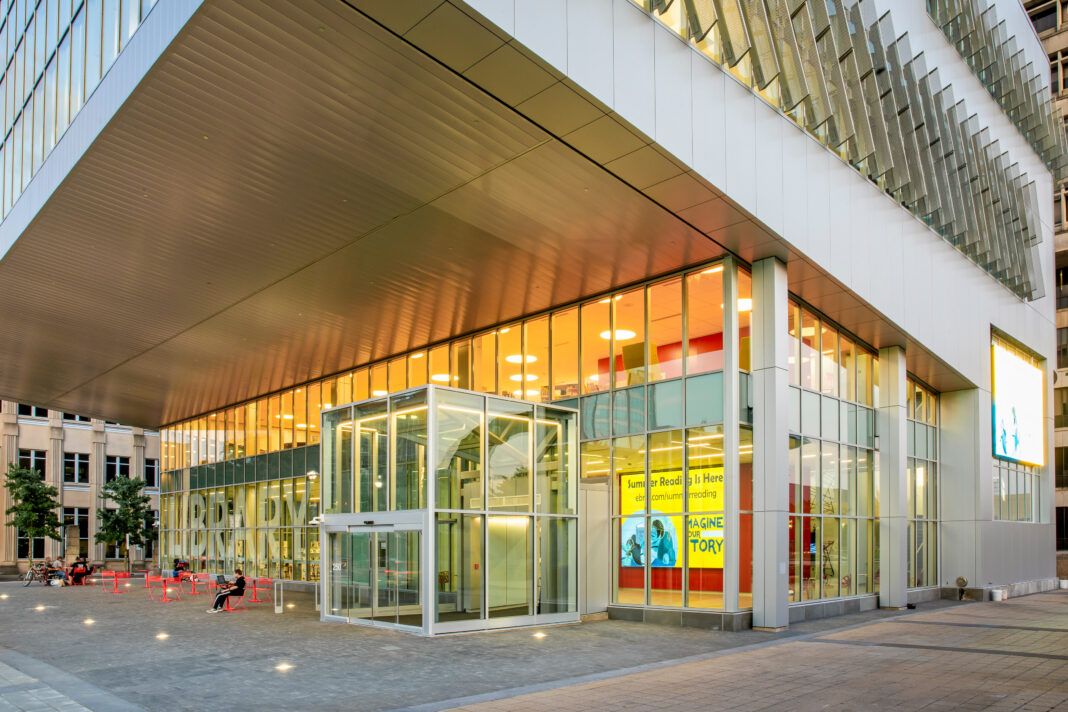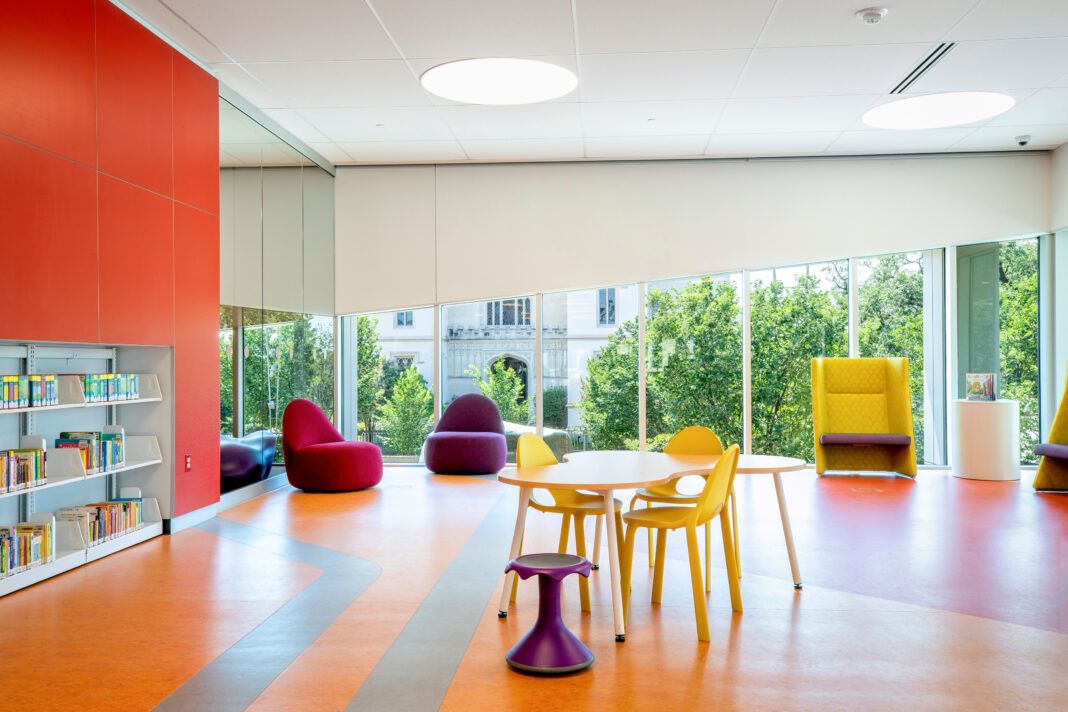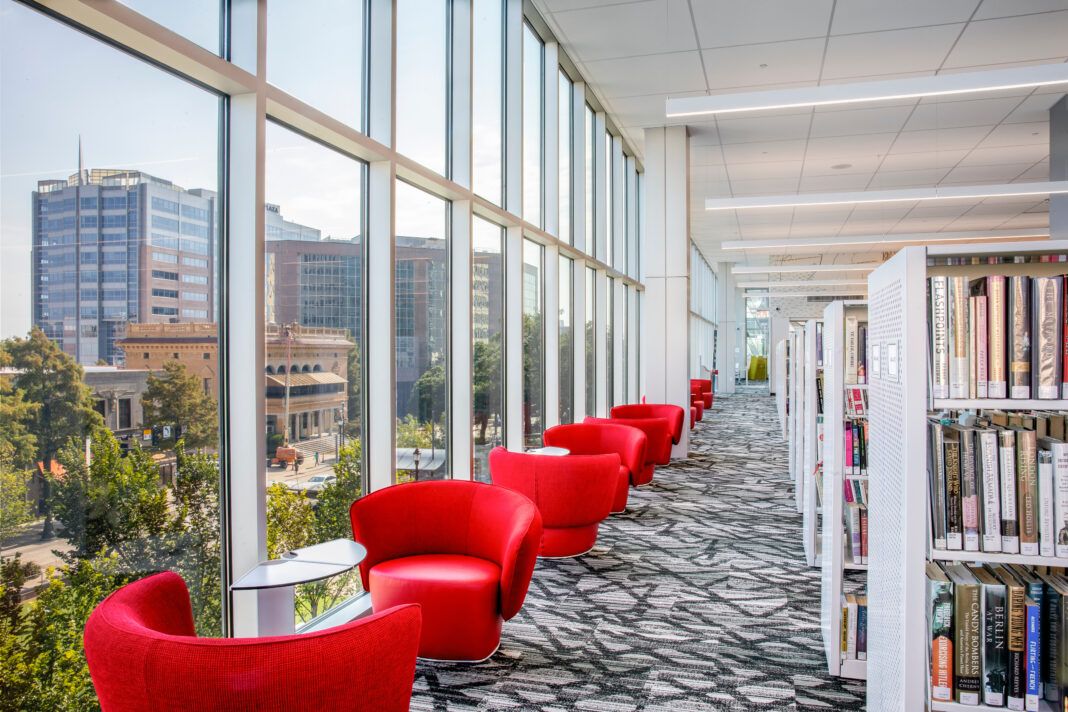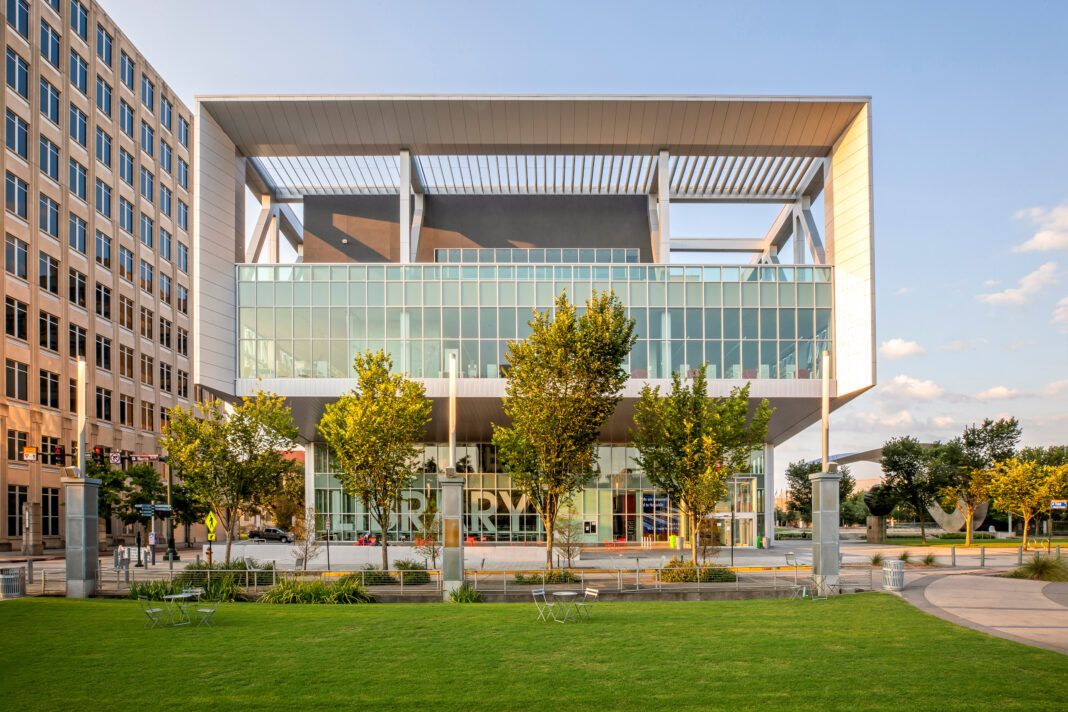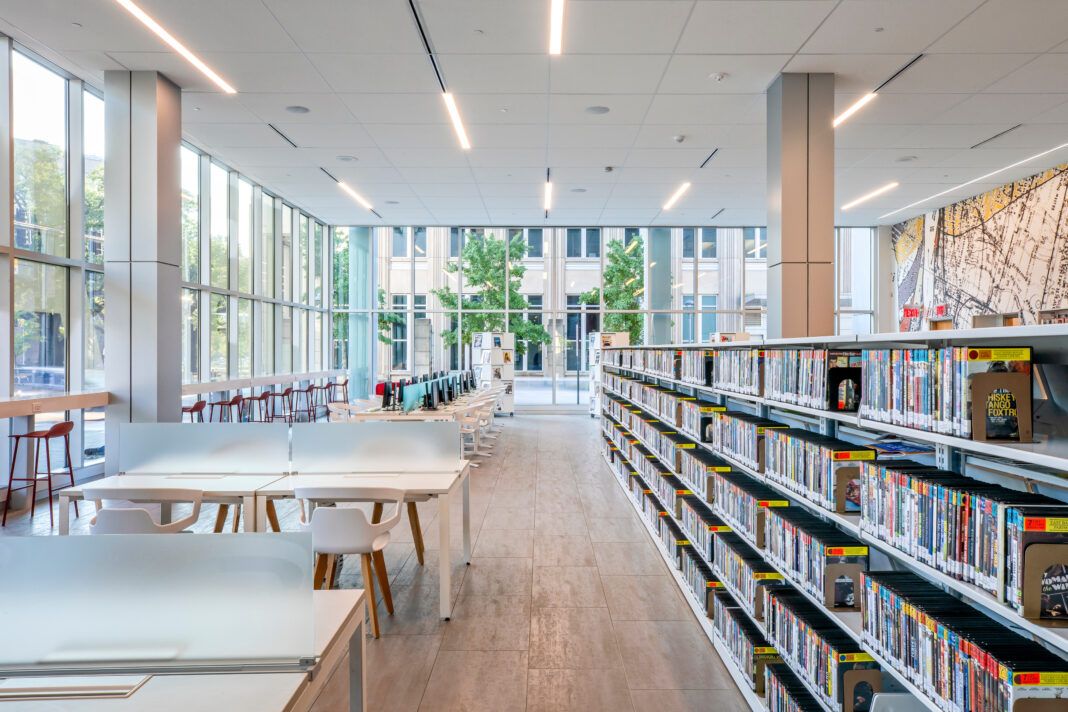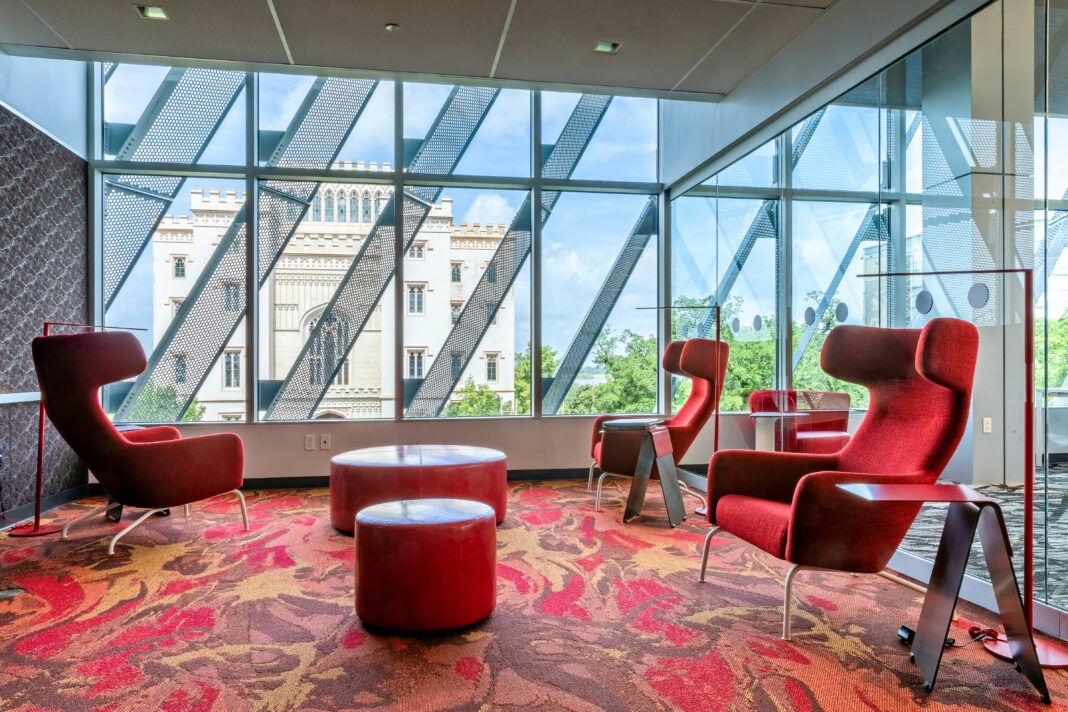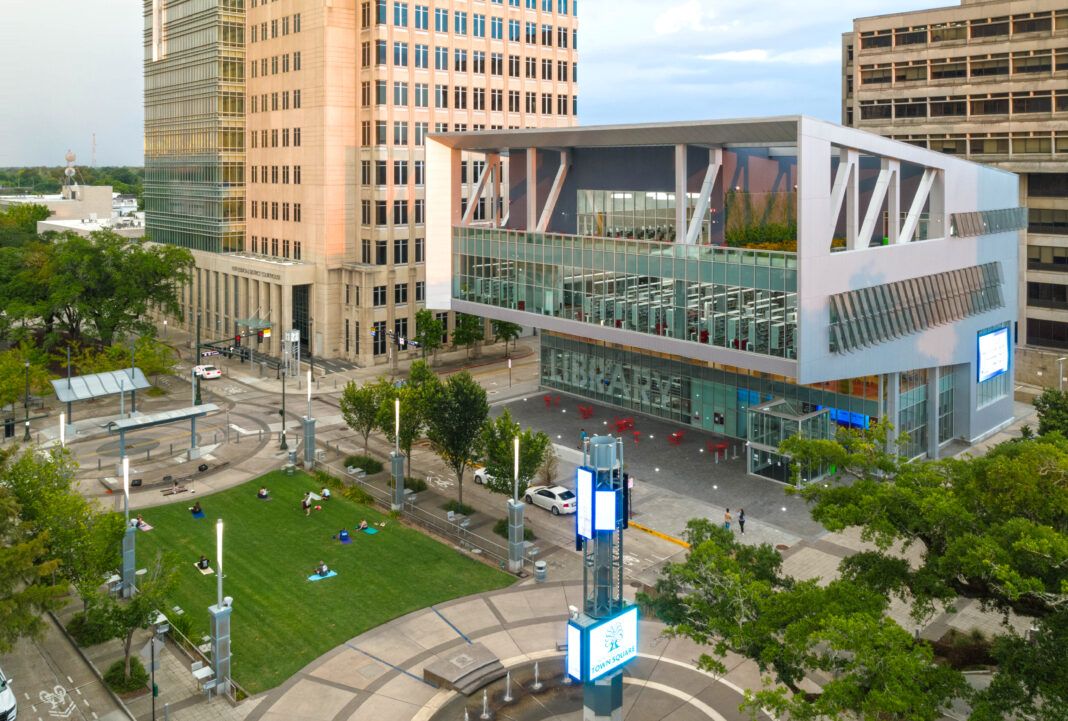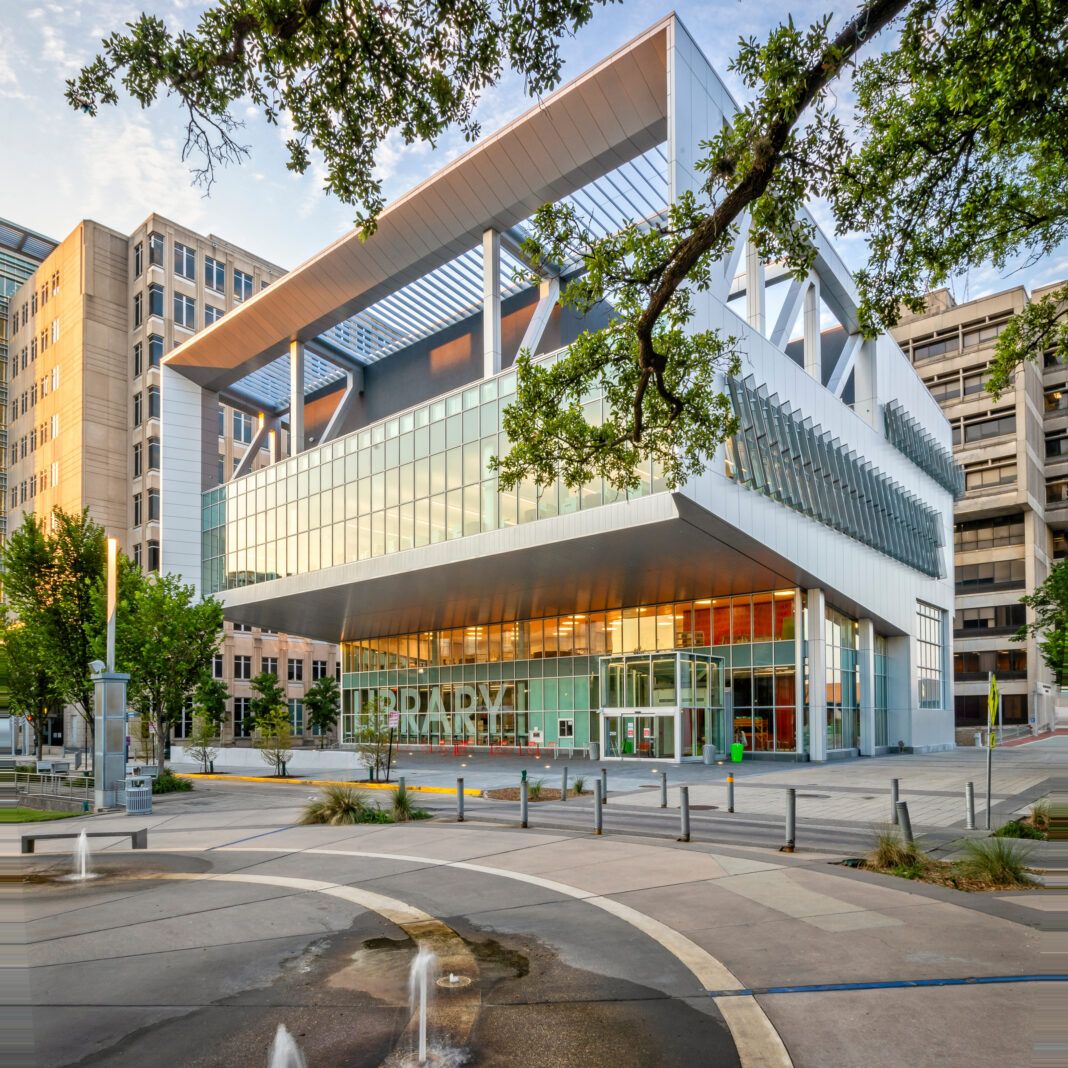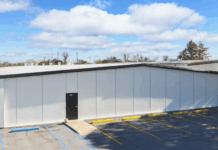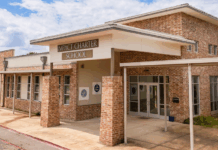This series about the 2021 American Institute of Architects Rose Awards
highlights award-winning architecture in Louisiana.
—
 WHLC Architecture + Schwartz Silver Architects Inc.
WHLC Architecture + Schwartz Silver Architects Inc.
East Baton Rouge Parish Downtown Library
CATEGORY: Architecture
This technology-rich downtown public library celebrates its distinctive regional climate, proximity to the Mississippi River, and unique local community.
The project creates a new model for library services for Baton Rouge. In addition to traditional book collections, there are spaces for community programming, outreach and creative collaboration; an array of high- and low-tech spaces for learning and creation; spaces for local entrepreneurs to work and collaborate; and dedicated program spaces for children, teens and adults.
The library’s distinctive cantilevered form came about not through an abstract aesthetic decision, but from a careful study of the program and the local climate. The stacked arrangement of dedicated floors for children, teens and adults provides both a shaded public plaza at street level and a public roof terrace that offers sweeping views of the Mississippi River and downtown—an experience unmatched among public buildings in the city.
Each façade is tuned to the solar orientation: the largest windows facing north, while diagonal sunshades diffuse the sun on the other facades. Maps of the river dominate the library’s interior, which also takes inspiration from local jazz with a fusion of patterns and colors.
While downtown Baton Rouge has seen an economic revival over the last 20 years, 40% of the city’s residents live at or below the poverty line. This library provides opportunities and engagement for all, meeting its users wherever they are in life, with the flexibility to serve the unique needs of the community for decades to come.
WHAT THE LIBRARY TEAM SAYS
“This is an exciting, dynamic new library for the city. The features and the basic design are the result of extensive community input developed over the years. We are so pleased with the result: an engaging, multifaceted facility that offers our citizens new opportunities for discovery, collaboration, and creativity.”
The Mississippi River is the main economic driver of the region, and illuminating the relationship of the river to the cultural heritage of Baton Rouge was an important goal for the project.
The library is in the heart of downtown Baton Rouge, a newly vibrant urban center featuring new restaurants, public parks, a town square, museums and a performing arts center. It was designed to create connections and opportunity.
The roof terrace is one of the few publicly accessible outdoor spaces in the City with views of the Mississippi over the levee. It supports a wide variety of public and non-profit programs and events, reconnecting the community to the river.
The building utilizes the full area of the site. A large covered public plaza faces Town Square to the north. An outdoor media wall faces an outdoor performance space to the west. A wrap-around public roof terrace features expansive views of the Mississippi River. In the evening, and on more temperate days, the large third floorplate provides a platform for a landscaped roof deck with sweeping views of the Mississippi River.
The project’s downtown siting means that patrons can reach the site by foot, bus, or bicycle. There is ample off-street and on-street parking in the immediate vicinity.
The North façade is almost entirely glazed, set within shading fins at the cornice and shaded by the cantilevered canopy on the lower floors. The design was developed to maximize daylight while minimizing direct sunlight, reducing glare and solar heat gain.
The building is clad in aluminum panels. Perforated aluminum sunshades line the windows on the east, west and south facades. Louvered sunshades shield the roof terrace from intense heat.
The Children’s Room is tucked under the overhang and occupies the entire second floor, providing a safe environment for children and their caregivers. Unlike the other floors, this floor has a relatively modest ceiling height with windows scaled to little learners. The floor also features a dedicated space for story hour and other programs.
Finishes and furnishings were selected to be highly durable, easily cleanable and cheerful. Mobile shelving allows for easy reconfiguration, and even the librarian service desks are on casters to allow for complete flexibility.
The library has become Baton Rouge’s “living room,” a place for the community to connect and collaborate, which the pandemic has taught us is so incredibly important to our quality of life.
 GET DAILY REPORT FREE
GET DAILY REPORT FREE


